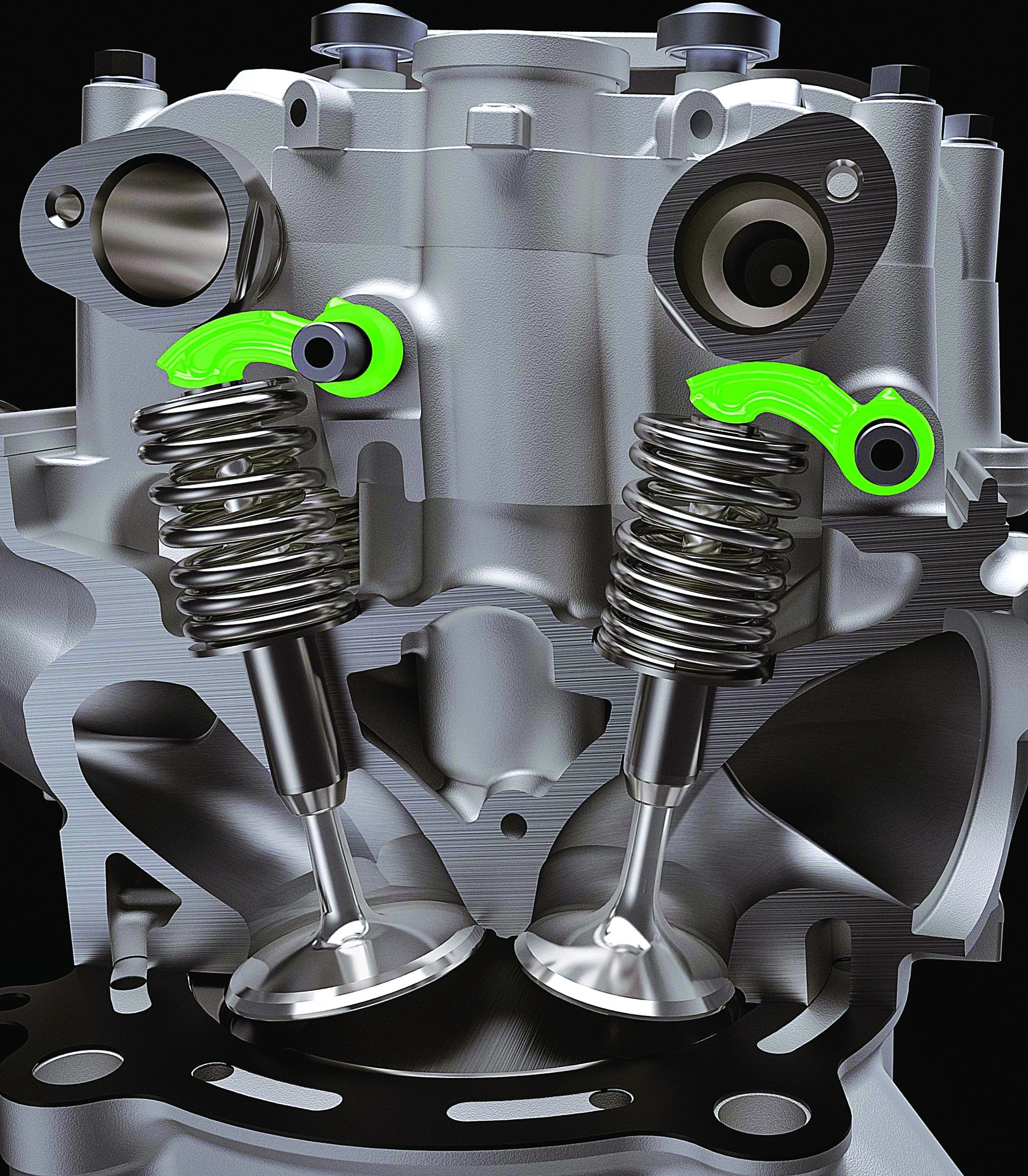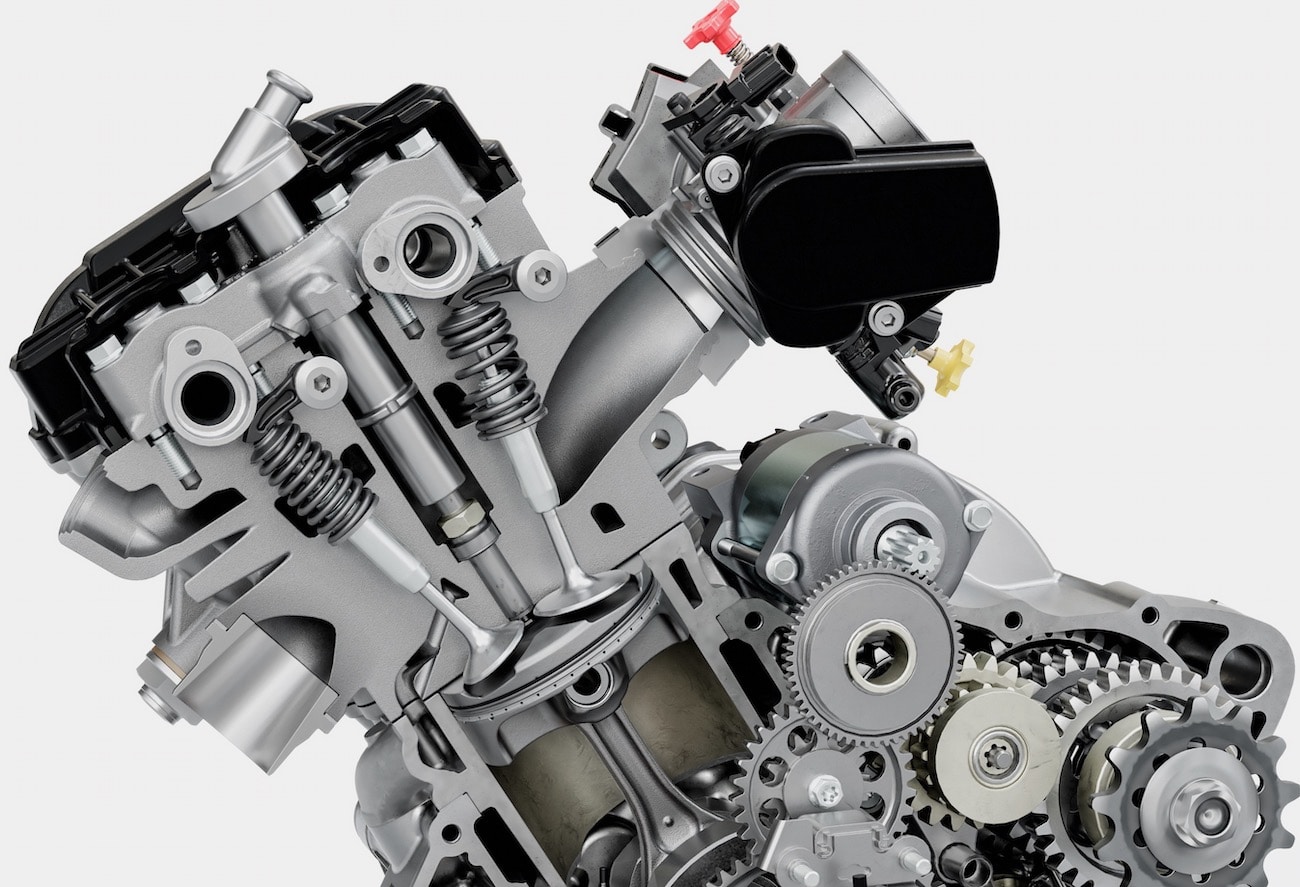MXA TECH SPEC: WHAT ARE THE ADVANTAGES OF FINGER-FOLLOWERS?

Unlike a two-stroke engine that manages its intake and exhaust cycles by the simple movement of the piston past ports cast into the cylinder, a four-stroke engine controls the intake of fresh fuel and the expulsion of burnt gases by the opening and closing of separate function ports in the cylinder head. These ports are divided into intake and exhaust ports, and they are opened and closed by mushroom-shaped valves that are actuated by eccentric lobes on the camshaft. A four-stroke needs four strokes (one to open the intake valves to let fuel in, two to close the intake valve, three to open the exhaust valve to let burnt gases out, and four to close the exhaust port). A four-stroke engine’s piston goes up twice to open the intake and exhaust valves and down twice to close the intake and exhaust valves.
A four-stroke engine uses the camshaft’s eccentric lobes to manage the suck, squeeze, bang, blow sequence of getting fuel in and out in the proper order, duration and quantity. The camshaft lobes push directly on the valve stems to open the valves, while valve springs close the valve after the eccentric lobes have moved past the stems; however, a cam lobe cannot simply press against the end of the valve stem, as the stem, being quite small in diameter, would soon gouge up the smooth-surfaced cam lobe. The cam lobes need a buffer between the valve’s stem and the cam’s lobe. Originally, four-stroke engines used a rocker arm between the cam’s lobe and the valve’s stem to push the valves open with a rocking-horse motion; however, this limited how many rpm the engine could withstand and added extra weight. The solution was to use a bucket between the lobe and the stem. The bucket, which looked like a miniature steel shot glass, acted as a go-between for the end of the valve stem and lobe. The bucket made it easy to adjust the valves, because they could be shimmed to take up any space between the bucket and the lobe; this is referred to as shim-under-bucket adjustment. Buckets have been used in road racing for 50 years but were only adapted to motocross four-strokes with the advent of the four-stroke era.

It was thought that the shim-under-bucket design was the end all of the cam/valve interaction, but it added weight, required extra cylinder head height and made the already bulbous cylinder head more complex. The new-school solution was to borrow finger-followers from Formula 1. Finger-followers are tiny, forged rocker arms that pivot off the cam lobe and press down on the valve stem to open the intake and exhaust ports.
The biggest advantage of finger-followers is that they can be tuned to deliver more lift for top-end power than is possible with the shim-under-bucket design. Plus, engine designers can make differently shaped finger-followers to get more lift and shorter duration. By lowering the weight in motion, you can increase rpm without compromising reliability.
Finger-followers have become the cause celebre on new models over the last few years, which leads to the question of which motocross bike was the first to adopt finger-followers? The answer shouldn’t surprise you! KTM first put finger-followers on its motocross bikes beginning with the 2005 KTM 250SXF. In the last five years, Honda, Husqvarna, GasGas and Kawasaki have adopted the finger-follower valvetrain system.






Comments are closed.